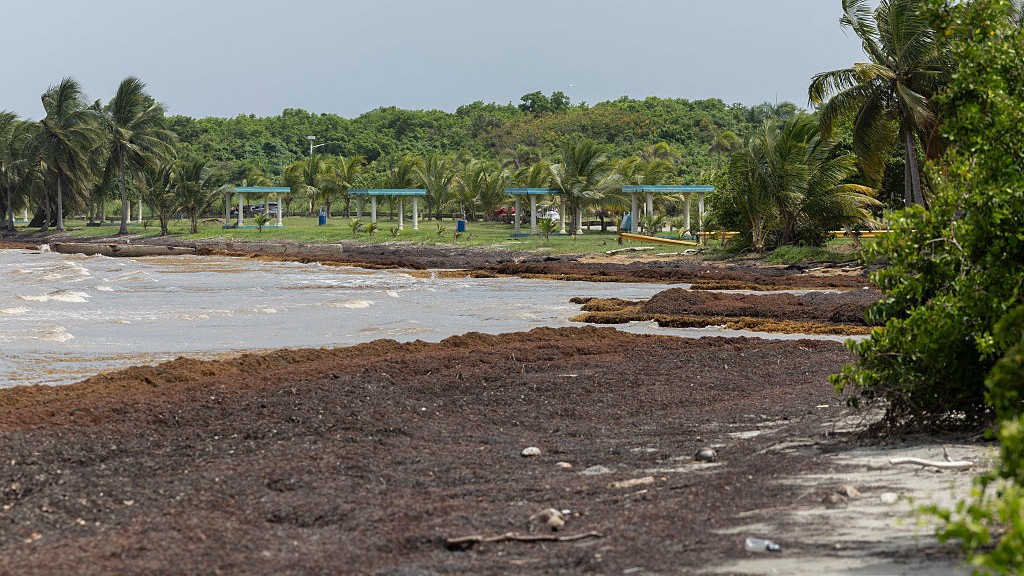Millions of tons of seaweed have washed up on Caribbean beaches in recent weeks — and as the mass begins to decay, the stench has smothered wildlife and even forced schools to shut temporarily.
A record-breaking 39 million tons (37.5 million metric tons) of sargassum choked the Caribbean Sea and parts of the Atlantic Ocean in May, according to a report by the University of South Florida’s Optical Oceanography Laboratory. That number is much higher than the previous record of 24 million tons (22 million metric tons), which was documented in June 2022.
As a result, beaches from Puerto Rico to Guyana are piled high with algae, and scientists expect the inundation will continue in the coming weeks.
“As in most previous years, June is expected to see continued increases in most regions,” scientists wrote in the report, which was published May 31. “More Sargassum is expected to be transported to the west Caribbean Sea and then to the Gulf [of Mexico] through the Yucatan. Sargassum inundations will continue to occur in most of the Caribbean nations and islands as well as along the southeast coast of Florida.”
Sargassum is a brown, prickly seaweed with air bladders that keep it afloat. Every year, the amount of sargassum in the Atlantic and Caribbean peaks in spring, stays high through summer and declines in the late fall and winter.
Related: Thousands of strange, blobby creatures are washing up on California beaches
But in recent years, scientists have noticed an uptick in the amount of sargassum. “The peaks just seem to keep getting bigger and bigger year after year,” Brian Barnes, an assistant research professor of physical oceanography at the University of South Florida and co-author of the new report, told The Guardian.
The reason for the increase remains a mystery, but experts suspect that agricultural runoff, warming waters and changes in wind, current and rain could be playing a role, The Guardian reported.
Fresh sargassum smells like typical seaweed and contributes to a healthy ocean ecosystem, but washed up piles of putrefying sargassum release a combination of ammonia gas and hydrogen sulfide gas that smells like rotting eggs, Chuanmin Hu, a professor of optical oceanography at the University of South Florida and also a co-author of the new report, told Live Science in an email.
Schools in Martinique and Anguilla have reportedly had to close for short periods due to bad odors wafting from the shoreline, and experts have warned that gases from decaying sargassum can harm people’s respiratory systems.
“Inhaling large quantities of such gases can cause respiratory problems, but people normally go away once they smell something bad,” Hu said. “For people working on rotten Sargassum, wearing masks is one way to protect [themselves].”
Decaying sargassum is not only unpleasant and potentially harmful for humans; it affects wildlife, too. Large quantities of seaweed can smother coral reefs and seagrass meadows, The Guardian reported, and creatures that wash up with the sargassum die or get picked off by birds.
Officials in the Caribbean have found various ways to deal with the problem, from barriers that prevent sargassum from reaching the shore to emergency cleanups and storage barges offshore. But the next few weeks could challenge these efforts.
“I think a new record will be reached in the coming weeks,” Hu said.
